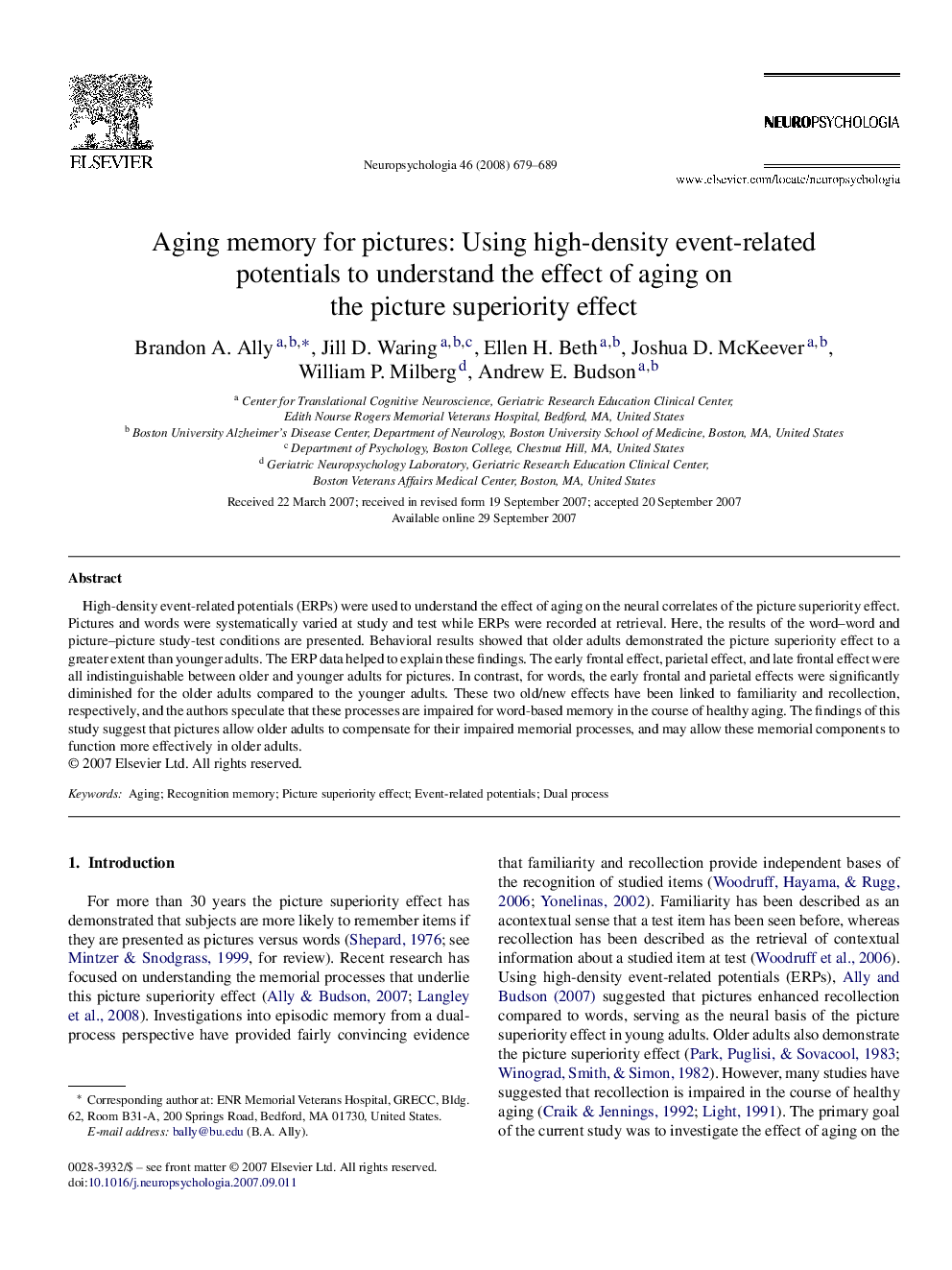| Article ID | Journal | Published Year | Pages | File Type |
|---|---|---|---|---|
| 945298 | Neuropsychologia | 2008 | 11 Pages |
High-density event-related potentials (ERPs) were used to understand the effect of aging on the neural correlates of the picture superiority effect. Pictures and words were systematically varied at study and test while ERPs were recorded at retrieval. Here, the results of the word–word and picture–picture study-test conditions are presented. Behavioral results showed that older adults demonstrated the picture superiority effect to a greater extent than younger adults. The ERP data helped to explain these findings. The early frontal effect, parietal effect, and late frontal effect were all indistinguishable between older and younger adults for pictures. In contrast, for words, the early frontal and parietal effects were significantly diminished for the older adults compared to the younger adults. These two old/new effects have been linked to familiarity and recollection, respectively, and the authors speculate that these processes are impaired for word-based memory in the course of healthy aging. The findings of this study suggest that pictures allow older adults to compensate for their impaired memorial processes, and may allow these memorial components to function more effectively in older adults.
